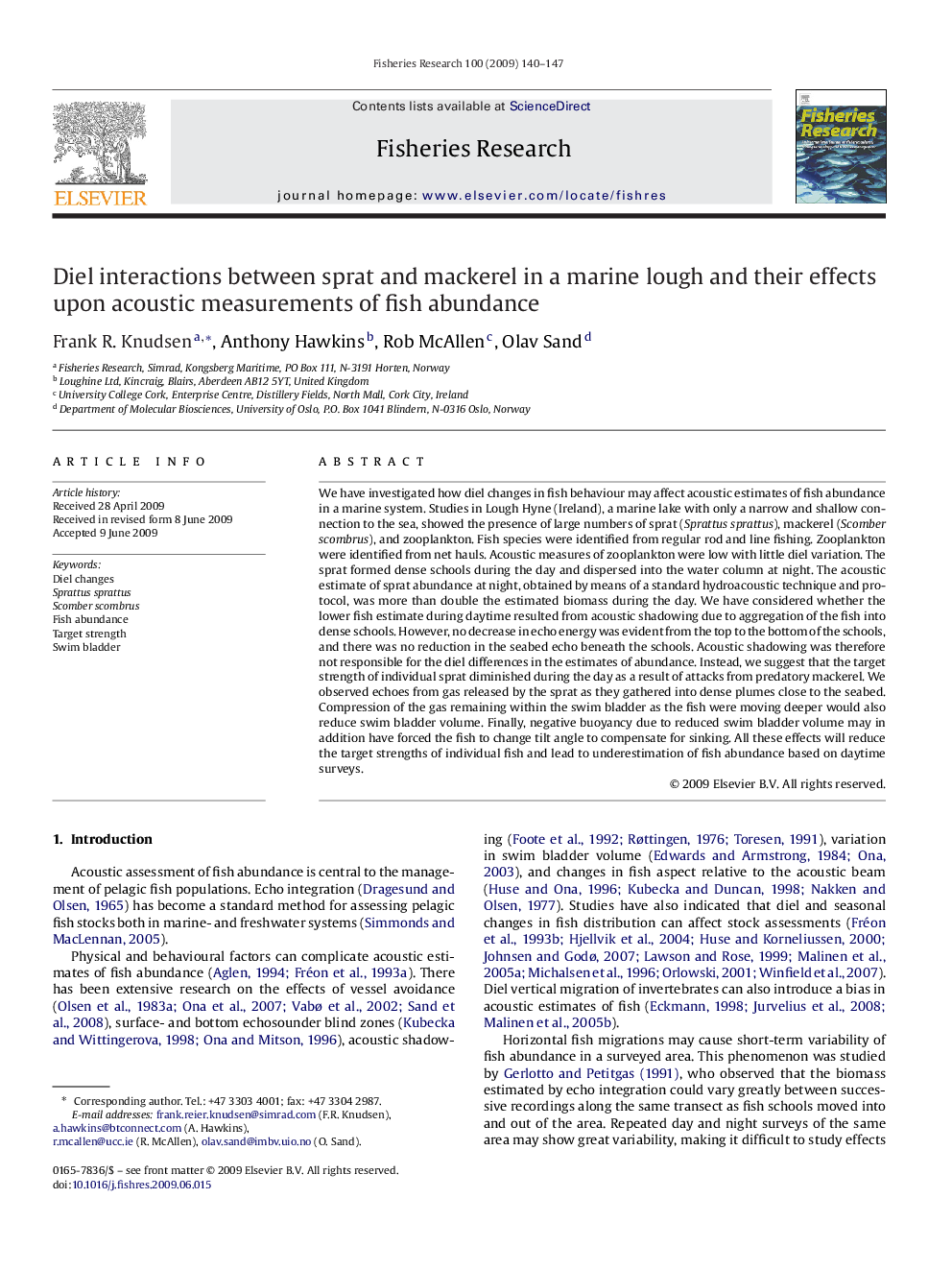| کد مقاله | کد نشریه | سال انتشار | مقاله انگلیسی | نسخه تمام متن |
|---|---|---|---|---|
| 4544059 | 1327177 | 2009 | 8 صفحه PDF | دانلود رایگان |

We have investigated how diel changes in fish behaviour may affect acoustic estimates of fish abundance in a marine system. Studies in Lough Hyne (Ireland), a marine lake with only a narrow and shallow connection to the sea, showed the presence of large numbers of sprat (Sprattus sprattus), mackerel (Scomber scombrus), and zooplankton. Fish species were identified from regular rod and line fishing. Zooplankton were identified from net hauls. Acoustic measures of zooplankton were low with little diel variation. The sprat formed dense schools during the day and dispersed into the water column at night. The acoustic estimate of sprat abundance at night, obtained by means of a standard hydroacoustic technique and protocol, was more than double the estimated biomass during the day. We have considered whether the lower fish estimate during daytime resulted from acoustic shadowing due to aggregation of the fish into dense schools. However, no decrease in echo energy was evident from the top to the bottom of the schools, and there was no reduction in the seabed echo beneath the schools. Acoustic shadowing was therefore not responsible for the diel differences in the estimates of abundance. Instead, we suggest that the target strength of individual sprat diminished during the day as a result of attacks from predatory mackerel. We observed echoes from gas released by the sprat as they gathered into dense plumes close to the seabed. Compression of the gas remaining within the swim bladder as the fish were moving deeper would also reduce swim bladder volume. Finally, negative buoyancy due to reduced swim bladder volume may in addition have forced the fish to change tilt angle to compensate for sinking. All these effects will reduce the target strengths of individual fish and lead to underestimation of fish abundance based on daytime surveys.
Journal: Fisheries Research - Volume 100, Issue 2, October 2009, Pages 140–147